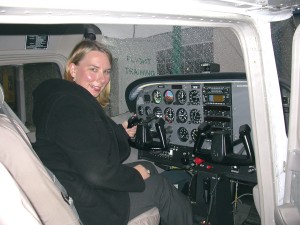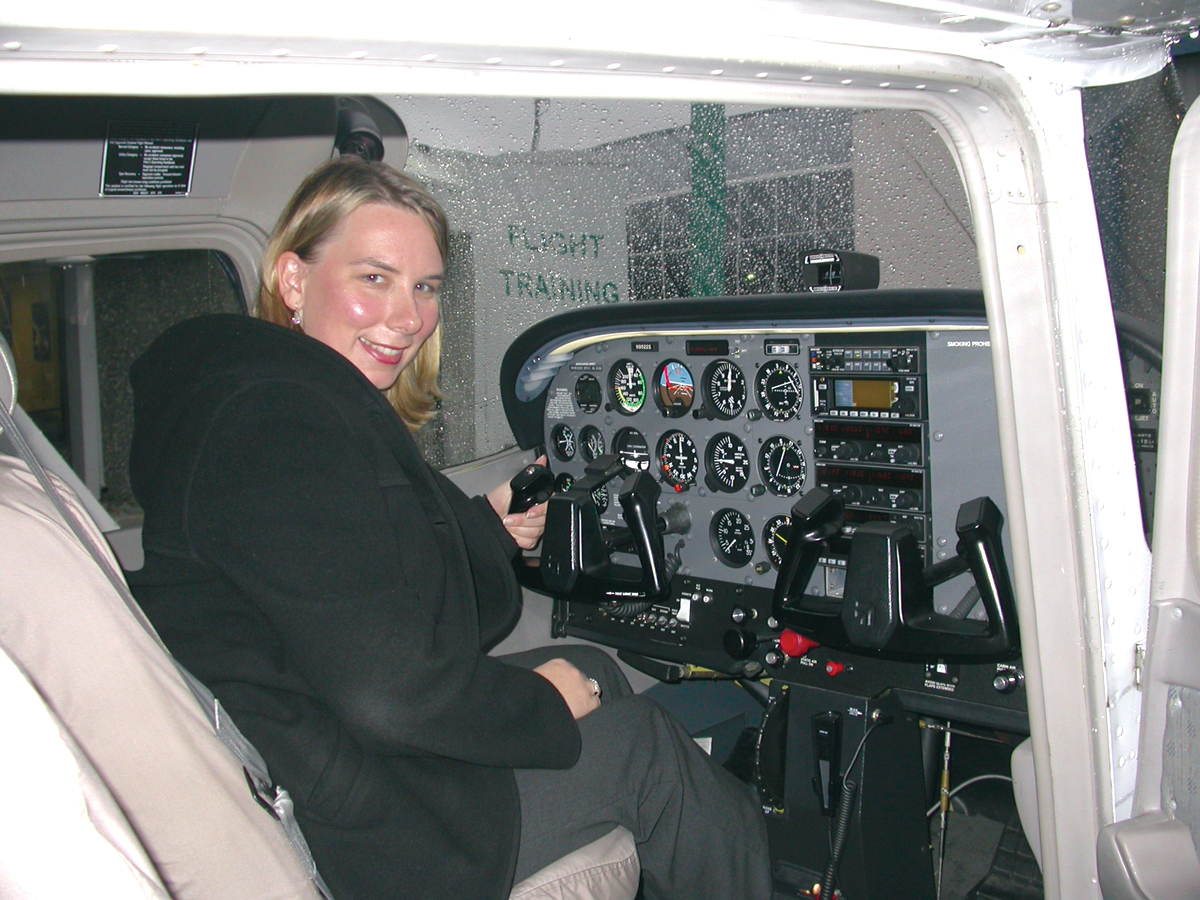By Terry Stephens

Henrietta Ball, a certified flight instructor with Galvin Flying Service at Boeing Field, is one of the nation’s newest master CFIs. The National Association of Flight Instructors bestows
There are more than 85,000 certified flight instructors in the United States. Fewer than 500 of them have earned the “master” accreditation offered by the National Association of Flight Instructors, a rating that’s often called “the black belt” of aviation education.
The last nine people named as FAA National Flight Instructors of the Year were master CFIs, putting Henrietta Ball of Boeing Field’s Galvin Flying Service in good company. She’s one of the newest master CFIs, an honor that officially validates the quality of her instruction and her continuing service to the aviation community.
“I grew up around aviation. Both my grandfathers, and my grandmother, flew planes,” she said. “I loved it and knew I wanted to fly.”
But there were a few “doglegs” in her aviation career before she found herself on final approach. She earned her pilot’s license in 1993 while she was in college, but had to give up flying for several years for lack of extra money in her student budget.
In 1995, a year before graduating from the University of Washington, she took at least a symbolic step toward her future flying career, hiring on as a ticket agent for a year and a half with Seattle’s leading floatplane company, Kenmore Air Harbor. After graduation, she enrolled in the Sierra Academy of Aeronautics’ professional pilot program in Oakland, Calif., graduating in 1998. Although she was always on the lookout for a role in aviation, she returned to a job as a manager and deckhand for Argosy’s sightseeing tour ships in Seattle, where she had worked seasonally since 1990.
Finally, her aviation career soared in 2000, after she landed at Galvin Flying Service. Today, she holds a prime role at Galvin, serving as a flight instructor for primary and advanced training in both single- and multi-engine aircraft and as a Civil Aviation Terminology System testing supervisor, overseeing the operation of the testing center and staff. She’s also responsible for Galvin’s foreign student services program.
“Fulfilling the requirements for the master CFI focuses on giving back to the aviation community,” she said. “It encourages you to look beyond yourself and gives you extra incentive to be involved in that community, which I like to do anyway. In fact, one reason I like it here at Galvin so much is because they do a lot of giving back to the aviation community.”
She credits the community service philosophy of Galvin’s president, Peter Anderson, who most recently has been active in the launching of the new Aviation High School in Seattle, for inspiring others to get involved, too. One result of that philosophy, she said, is that there are now six master CFIs employed at Galvin, out of only 23 in the state of Washington who have earned that designation.
Ball’s many qualifying activities for the “master” honor include her participation in Young Eagles’ flights.
“I love taking kids flying. They get very excited about how cool it is and how seemingly easy it is. The experiences are seeds that will one day grow into good things,” Ball said.
She’s also put much of her time into introducing youths to aviation through programs in local schools.
“Last year I taught the FAA Part 141 ground school course to high school juniors and seniors at the SeaTac Occupational Skills Center operated by Highline School District. But it was much more than just ground school,” Ball said. “This was a nine-month course that included aviation history, designing and building gliders, writing papers on favorite aviation events and hearing guest speakers from all over the industry. I love working with high school students, so I just applied to be a mentor at Aviation High School.”
Along with working career fairs and speaking to Girl Scout groups about the life of a pilot and flight instructor, Ball knows she has already influenced many youths to think about aviation careers or even to think about different flying careers than they had imagined.
“There are so many different routes to take in aviation and ways to get where you want to go,” she said. “Everyone has a different story, which is what I asked our guest speakers at the ground school course to talk about. At first, so many students feel the only way to get into aviation is through the military, but that’s not the only answer.”
Ball said she emphasizes getting a well-rounded education to prepare for any aviation career, but also to explore the varied careers in aviation. By the end of the class, she said, some students who had only wanted to be airline pilots were turning their thoughts to being an air traffic controller or an aircraft sales person, once they realized “the different areas of aviation.”
As part of the course, she created a PowerPoint presentation for the students on the aviation curriculum, since using creative media as a teaching tool was another qualifying activity emphasized in the NAFI’s master CFI program. One of the unanticipated results of her nine-month ground school and aviation program at the skills center was that it was so popular that Aviation High School administrators are integrating it into the school’s regular curriculum as a career development opportunity for students.
Ball also teaches “hangar-flying” seminars in the fall and winter, part of Galvin’s roster of programs for pilots, “to keep people’s minds in the game when the weather isn’t so good.”
Her work as a flight instructor at Galvin has the variety and challenge Ball demands in her career, including being available on the students’ schedules rather than her own.
“We have an active flying community in the Puget Sound area,” she said. “Each instructor works regularly with assigned students, depending on their hours, which can mean flying evenings or weekends with them. We tailor our work to fit the students’ schedules because we teach one-on-one with them, not in a classroom setting.”
There’s a lot of personal reward in the long hours and the weeks and months of training for future pilots, she said.
“I love to see people realize their dreams,” Ball said. “When they solo for the first time it’s really exciting, standing on the runway and hoping everything goes well for them. The student comes back beaming with such pride for his accomplishment. Then I often help them get training for their various ratings (as they progress). It’s a rewarding job.”
While the Galvin environment suits her well and encourages her to continually upgrade her experiences and education, she also likes the way Galvin upgrades their fleet of planes, especially the “glass flight decks.”
“Galvin is very high-tech,” she said. “All of the planes have autopilots, GPS and glass cockpits instead of the basic ‘six-packs’ of basic instruments you usually see. The glass screens are the most exciting thing I’ve seen in aviation in quite a while. It’s a pleasure to be training in planes like this.”
The NAFI’s master CFI program puts the emphasis on “continuing” service and education, a qualifying process that “parallels continuing education programs used by other professionals to enhance their knowledge base while increasing their professionalism,” according to the NAFI program outline. Much like a flight instructor’s certificate, the master CFI designation has to be renewed every two years, encouraging instructors to demonstrate an ongoing commitment to excellence, professional growth and service to the aviation community.
All master instructors’ portfolios are examined by the NAFI Board of Review for approval. Qualifying is based on the amount of time spent in qualifying activities as well as on the variety of services.
More information about the master CFI program is available at [http://www.nafinet.org/].











